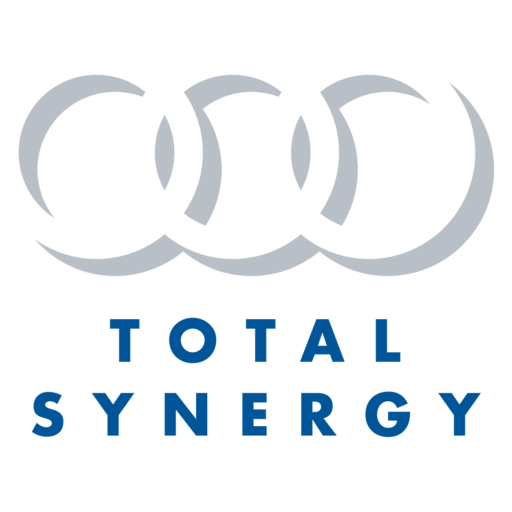The fact is that your success hinges on you knowing your real costs. Not just labour charges for fee earners, and raw costs either. But how much it truly costs for you to complete a project. In a July 2021 article on architecture.com, financial consultant and former finance director at Grimshaw, Michael Holmes, said that “only by understanding its real cost rates can practices put together a sensible fee bid”.
What that means for your practice, is that fee proposals need to go beyond a summary of the design brief and services required. The hours that billable staff members spend on administration, the cost of non-billable employee salaries, electricity in the office, insurances, and a multitude of other expenses must be worked into your overhead costs. Because your architecture, engineering, and built environment projects are your source of income, those overheads must be factored into every fee proposal your firm puts together. It’s critical to your ability to achieve consistent success.
So how do you put together a fee proposal that does that properly? We spoke with David Yeates (Synergy business and project management software consultant, with a decade’s experience running a successful architecture practice) about the answer to that question. David says, “First and foremost, the number one thing when writing a fee proposal, is that you’ve got to get your rates right.”
The cost of managing clients, and your portfolio
When beginning to write your fee proposal, it’s important to understand who you’re writing it for. Whether it’s a mum-and-dad investor building a new home, a mid-tier developer, or a government contract, the nature of your client will necessitate varying amounts of management.
Our small scale, residential client example will likely need educating as you go, with higher client touch or interaction, and higher overhead in management costs for you as a result. Costs you need to account for in your fee proposal. A mid-tier developer on other hand, will be well versed in the likely requirement of engineering inputs, phases, and stages, and require less of your time.
“The other thing about those different types of fee proposals, is you would never take on a small scale, residential client as a portfolio piece” says David. It’s common practice in the built environment design industry to take on a government project, for example, and offer them a price devoid of profit, to add that project to a portfolio of work — so you can move into a new market.”
If you’re breaking even on a portfolio project like that, it’s critical to know that you’re making profit on your other projects to not send your business under. David says, “It doesn’t matter what kind of fee proposal you’re putting together, you need to make sure that it fits into your wider portfolio of projects, to make sure that you are actually covering all of your costs, even if you’re doing a loss-leader project.”
The overhead factor
It’s clear that when you consider your overhead costs you need to account for everything outside of your project costs. Your rent, insurance, IT systems, and non-billable staff salaries, just to start. However, there are other costs that need to be considered here too. David says, “overheads include the company director’s car lease, the meals and other extras that senior staff get, and all the other hidden benefits that a lot of directors don’t want disclosed.”
For that reason, it’s important to have the ability to calculate your overhead costs privately. Ideally using your own business management software system, in-house, to come up with a figure. David says, “Synergy is one of the only places I’ve ever seen that provides you with the tools to input those figures and reduce them to a single integer, which we call the ‘overhead factor’.”
Whether you’re using Synergy software or not, you want to take the cost of all your business overheads and reduce that to a single number. In the built environment design industry that number typically ranges between 1.7 and 2.3.
Practice directors will need to decide what number they’re comfortable with based on their calculations. In Synergy, your System Administrator can adjust your financial controls to accommodate this. You then can have this flow through all your staff cost calculations and maintain a level of privacy in how you do this — with minimal people having access to how you’ve reached the multiplier you’re using in your overhead factor.
Staff cost rates
To begin addressing staff cost rate calculations, David suggests we imagine that our overhead number was two. Next, we should imagine Janey, who has the following costs associated with her fictitious tenure:
- Janey has a base salary, let’s say, $9 an hour
- Janey also has a series of uniquely personal on-costs (depending on where she works, pension/superannuation/national pension/insurances/etc.) which equate to an additional $1 an hour
The cost of Janey to your business is $10 an hour for wages and superannuation. If we take out utilization and availability for a moment to work with a broad brush, and you’ve got an overhead factor of two (where you’ve already considered all the expenses of the business and reduced it to a single multiplier, as discussed above) then you need to multiply Janey’s cost by the overhead factor:
- Janey’s raw cost to your business is $20 an hour
At the $20 rate, for every hour Janey works, she covers her cost and her part of the cost of the business. Because it’s a multiplier of their raw cost, the overhead factor is applied the same to every fee-earning staff member. Your next consideration is profit.
Working out profit
Now, if you’ve got a preferred profit margin of 20 percent, Janey’s $9 plus on-costs ($10), with overhead factor ($20), plus 25 percent (pure profit for the business):
- Janey’s charge-out rate is $25 an hour
At this point, you can figure out all of your fees on $25 an hour, knowing that you are going to cover her cost, the business cost, and profit. That amount is what we refer to as Janey’s charge-out cost, or, more precisely, her ‘project rate’.
David says, “The mistake a lot of people make, is that they use published industry rates — which is to say that while Janey’s only $25 to us, we know that the industry will tolerate us charging her out at $100 an hour (essentially, they’ve got a massive buffer of super profit there). But if you’ve got $1,000 to do a parcel of work, do you want to be charging somebody at $100 an hour on that or $25 an hour?”
You want to be charging $25 an hour on that because you’re writing this part of the fee proposal at a fixed rate. You want as many hours of their time as possible, to do as good a job as you possibly can.
It’s when variation work comes in that you’ll be charging Janey out at the industry rate, and you want to be clear about that in your fee proposal too.
Testing your numbers – up and down
Now we’ve established that your rates must include your raw cost, your overheads, and your profit, David says, “the second most important thing in writing a fee proposal is the ability to test your numbers.” What’s important here, is being able to test both top-down and bottom-up.
When you’re putting together top-down finance for a fee proposal, your basis for coming up with a cost estimate on your project generally comes from industry experience. A director may say, “We’ll do that stage for $10,000, that one for $20,000, and that for $30,000”. It ends up being pretty accurate, because the director knows what they’re doing and can assess a project against their experience of what it costs. They start with the big (top) number, and then work what resources are needed to execute to make up that big number.
The bottom-up method begins with an assessment of which resources you’ll need to complete the project, and how long you’ll need them. How many director hours, architect or engineer hours, CAD technician hours, etc. will it take? You then add all those resource hours together to arrive at your total estimated price for the work. Some engineering firms do this with drawing estimates (they use an average fee per drawing, then multiply that by the number of drawings required for the project). Whichever method is used, the principle is the same – bottom-up costing.
“It’s about being able to test it both ways” says David. “If you’ve got your top-down number you need to make sure there’s enough money to cover the hours required for the director/project manager/CAD tech/etc. If you’re doing it from the bottom up, you need to be able to verify that end figure against historical fees or industry standard costs.
“The risk with only bottom-up is that you overprice your fee submission and the risk of only doing it top-down is that you run out of resources way too early.”
How to write an accurate fee proposal – recap
David says, “getting your fees right in your fee proposal is ultimately your best guess – it’s a plan.” The way to keep that guess reasonable and as accurate as possible is to know that you’ve covered:
1. Your costs
2. Your overheads
3. Your profit
4. Testing your numbers both top-down and bottom-up
The easiest way to make sure your figures reflect your actual costs is always going to be having all your business and project accounting and management data in the one spot, in one software system. What David refers to as ‘a single point of truth’. “You want all your raw costs, your profit, and overheads all packaged up beautifully and standardized so that the backend detail remains confidential, and your fee proposal accuracy is as close as possible” says David.
The fact is that your success hinges on you knowing your real costs. Not just labour charges for fee earners, and raw costs either. But how much it truly costs for you to complete a project. In a July 2021 article on architecture.com, financial consultant and former finance director at Grimshaw, Michael Holmes, said that “only by understanding its real cost rates can practices put together a sensible fee bid”.
What that means for your practice, is that fee proposals need to go beyond a summary of the design brief and services required. The hours that billable staff members spend on administration, the cost of non-billable employee salaries, electricity in the office, insurances, and a multitude of other expenses must be worked into your overhead costs. Because your architecture, engineering, and built environment projects are your source of income, those overheads must be factored into every fee proposal your firm puts together. It’s critical to your ability to achieve consistent success.
So how do you put together a fee proposal that does that properly? We spoke with David Yeates (Synergy business and project management software consultant, with a decade’s experience running a successful architecture practice) about the answer to that question. David says, “First and foremost, the number one thing when writing a fee proposal, is that you’ve got to get your rates right.”
The cost of managing clients, and your portfolio
When beginning to write your fee proposal, it’s important to understand who you’re writing it for. Whether it’s a mum-and-dad investor building a new home, a mid-tier developer, or a government contract, the nature of your client will necessitate varying amounts of management.
Our small scale, residential client example will likely need educating as you go, with higher client touch or interaction, and higher overhead in management costs for you as a result. Costs you need to account for in your fee proposal. A mid-tier developer on other hand, will be well versed in the likely requirement of engineering inputs, phases, and stages, and require less of your time.
“The other thing about those different types of fee proposals, is you would never take on a small scale, residential client as a portfolio piece” says David. It’s common practice in the built environment design industry to take on a government project, for example, and offer them a price devoid of profit, to add that project to a portfolio of work — so you can move into a new market.”
If you’re breaking even on a portfolio project like that, it’s critical to know that you’re making profit on your other projects to not send your business under. David says, “It doesn’t matter what kind of fee proposal you’re putting together, you need to make sure that it fits into your wider portfolio of projects, to make sure that you are actually covering all of your costs, even if you’re doing a loss-leader project.”
The overhead factor
It’s clear that when you consider your overhead costs you need to account for everything outside of your project costs. Your rent, insurance, IT systems, and non-billable staff salaries, just to start. However, there are other costs that need to be considered here too. David says, “overheads include the company director’s car lease, the meals and other extras that senior staff get, and all the other hidden benefits that a lot of directors don’t want disclosed.”
For that reason, it’s important to have the ability to calculate your overhead costs privately. Ideally using your own business management software system, in-house, to come up with a figure. David says, “Synergy is one of the only places I’ve ever seen that provides you with the tools to input those figures and reduce them to a single integer, which we call the ‘overhead factor’.”
Whether you’re using Synergy software or not, you want to take the cost of all your business overheads and reduce that to a single number. In the built environment design industry that number typically ranges between 1.7 and 2.3.
Practice directors will need to decide what number they’re comfortable with based on their calculations. In Synergy, your System Administrator can adjust your financial controls to accommodate this. You then can have this flow through all your staff cost calculations and maintain a level of privacy in how you do this — with minimal people having access to how you’ve reached the multiplier you’re using in your overhead factor.
Staff cost rates
To begin addressing staff cost rate calculations, David suggests we imagine that our overhead number was two. Next, we should imagine Janey, who has the following costs associated with her fictitious tenure:
- Janey has a base salary, let’s say, £9 an hour
- Janey also has a series of uniquely personal on-costs (depending on where she works, pension/superannuation/national pension/insurances/etc.) which equate to an additional £1 an hour
The cost of Janey to your business is £10 an hour for wages and superannuation. If we take out utilization and availability for a moment to work with a broad brush, and you’ve got an overhead factor of two (where you’ve already considered all the expenses of the business and reduced it to a single multiplier, as discussed above) then you need to multiply Janey’s cost by the overhead factor:
- Janey’s raw cost to your business is £20 an hour
At the £20 rate, for every hour Janey works, she covers her cost and her part of the cost of the business. Because it’s a multiplier of their raw cost, the overhead factor is applied the same to every fee-earning staff member. Your next consideration is profit.
Working out profit
Now, if you’ve got a preferred profit margin of 20 percent, Janey’s £9 plus on-costs (£10), with overhead factor (£20), plus 25 percent (pure profit for the business):
- Janey’s charge-out rate is £25 an hour
At this point, you can figure out all of your fees on £25 an hour, knowing that you are going to cover her cost, the business cost, and profit. That amount is what we refer to as Janey’s charge-out cost, or, more precisely, her ‘project rate’.
David says, “The mistake a lot of people make, is that they use published industry rates — which is to say that while Janey’s only £25 to us, we know that the industry will tolerate us charging her out at £100 an hour (essentially, they’ve got a massive buffer of super profit there). But if you’ve got £1,000 to do a parcel of work, do you want to be charging somebody at £100 an hour on that or £25 an hour?”
You want to be charging £25 an hour on that because you’re writing this part of the fee proposal at a fixed rate. You want as many hours of their time as possible, to do as good a job as you possibly can.
It’s when variation work comes in that you’ll be charging Janey out at the industry rate, and you want to be clear about that in your fee proposal too.
Testing your numbers – up and down
Now we’ve established that your rates must include your raw cost, your overheads, and your profit, David says, “the second most important thing in writing a fee proposal is the ability to test your numbers.” What’s important here, is being able to test both top-down and bottom-up.
When you’re putting together top-down finance for a fee proposal, your basis for coming up with a cost estimate on your project generally comes from industry experience. A director may say, “We’ll do that stage for £10,000, that one for £20,000, and that for £30,000”. It ends up being pretty accurate, because the director knows what they’re doing and can assess a project against their experience of what it costs. They start with the big (top) number, and then work what resources are needed to execute to make up that big number.
The bottom-up method begins with an assessment of which resources you’ll need to complete the project, and how long you’ll need them. How many director hours, architect or engineer hours, CAD technician hours, etc. will it take? You then add all those resource hours together to arrive at your total estimated price for the work. Some engineering firms do this with drawing estimates (they use an average fee per drawing, then multiply that by the number of drawings required for the project). Whichever method is used, the principle is the same – bottom-up costing.
“It’s about being able to test it both ways” says David. “If you’ve got your top-down number you need to make sure there’s enough money to cover the hours required for the director/project manager/CAD tech/etc. If you’re doing it from the bottom up, you need to be able to verify that end figure against historical fees or industry standard costs.
“The risk with only bottom-up is that you overprice your fee submission and the risk of only doing it top-down is that you run out of resources way too early.”
How to write an accurate fee proposal – recap
David says, “getting your fees right in your fee proposal is ultimately your best guess – it’s a plan.” The way to keep that guess reasonable and as accurate as possible is to know that you’ve covered:
1. Your costs
2. Your overheads
3. Your profit
4. Testing your numbers both top-down and bottom-up
The easiest way to make sure your figures reflect your actual costs is always going to be having all your business and project accounting and management data in the one spot, in one software system. What David refers to as ‘a single point of truth’. “You want all your raw costs, your profit, and overheads all packaged up beautifully and standardized so that the backend detail remains confidential, and your fee proposal accuracy is as close as possible” says David.



